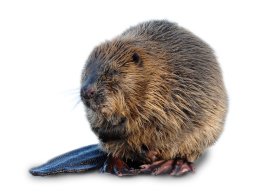Beavers and People
In places where their natural, secluded habitat is unavailable, beavers may build dams near residential areas. Some property owners even encounter the pests up close.
These animals are rarely hostile, but under the right conditions, beavers are dangerous to people.
Do Beavers Attack Humans?
Beavers are not dangerous if left alone. However, they will stand their ground and confront a threat. If trapped or cornered, a beaver will attack a human.
The rodents’ sharp teeth may cause serious injury as well as infection. Beavers carry tularemia, parasites, and rabies, which can transfer through bites, body fluids, or infected water.
Before beavers attack humans or other animals, they send a warning by growling and hissing. On land, the animal rises to its hind legs to face a threat. In the water, a startled beaver slaps its tail against the surface to alert others in the colony before diving to safety.
Are Beavers Dangerous to Property?
The greatest danger from a beaver infestation is damage to yards and homes. The pests take down trees to build their dams, resulting in loss of costly landscaping plants as well as potential falling tree damage to buildings. Beaver activity also poses a flooding hazard to nearby houses.
Removing Problem Beavers
If beavers come too close to a house or property, there are a few deterrents homeowners can try. Installing fences and tree shields may prevent the pests from harming landscaping.
Most of the time, though, professional services are most effective. The specialists at Critter Control have the proper tools to remove beavers safely.



